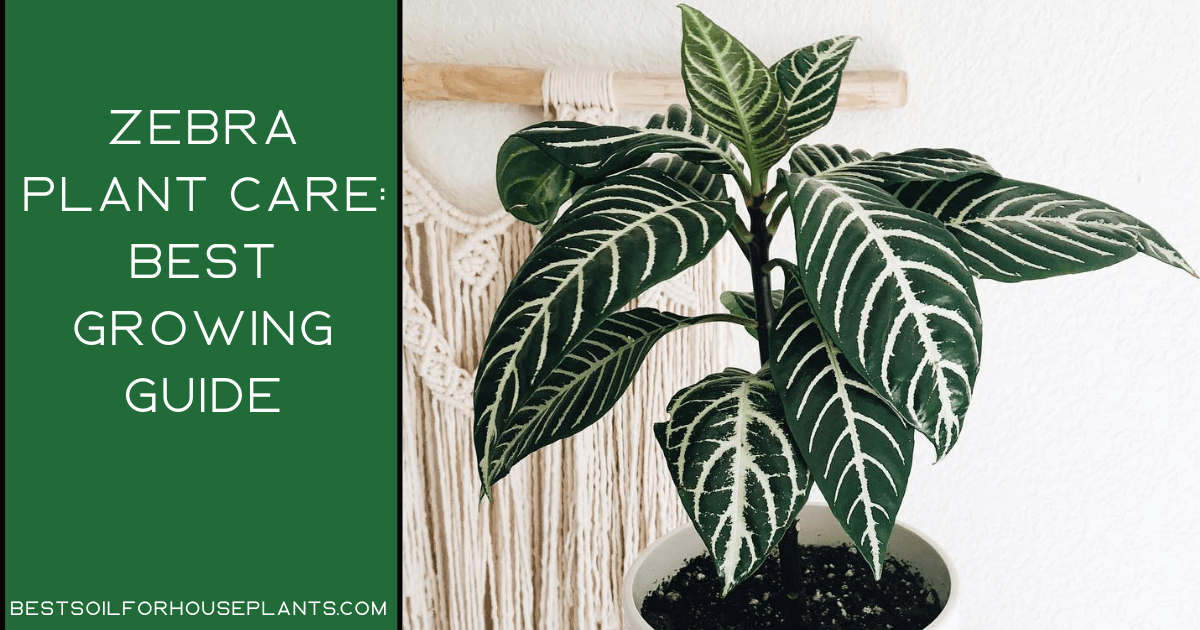Aphelandra squarrosa rightfully belongs to the most beautiful ornamental flowering plants. The flowering period begins with this plant at a time when most of all flowers are preparing for a dormant period. Despite the decorativeness of the inflorescences, the plant looks no less impressive without them, since the leaves of the aphelandra are very attractive. so let’s speak about zebra plant care.
However, caring for this exotic handsome zebra plant is quite difficult, because it is difficult and not always possible to recreate a tropical climate in an apartment. What conditions do zebra plant need for growth and lush flowering? Let’s figure it out.
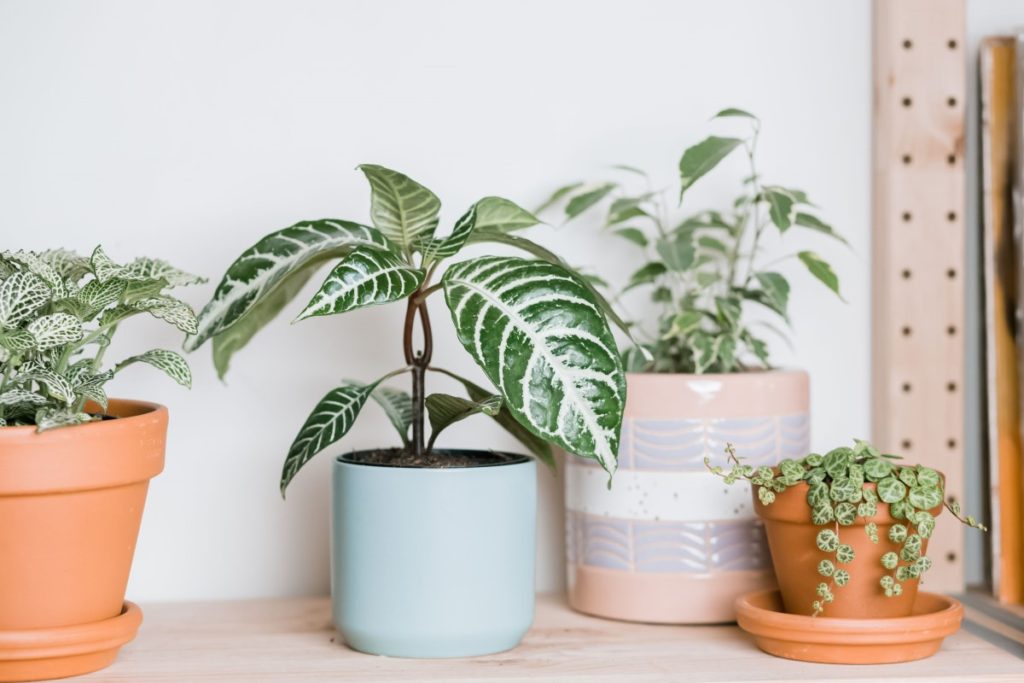
The origin of the plant
Aphelandra squarrosa is native to the tropical forests of South, Central, and North America. All representatives of the acanthus family, to which the zebra plant belongs, are evergreen shrubs and semi-shrubs. In particular, zebra plants are a shrub up to half a meter high with beautiful corrugated leaves that are arranged oppositely on the stems.
What the flower looks like?
The color of the leaf plates is variegated due to the presence of silver veins on dark green leaves. Zebra plants are collected in tetrahedral inflorescences from 12 to 15 cm long. The palette of inflorescences is yellow-orange. Zebra plant bloom up to six weeks, sometimes even for 3 months. Then it is necessary to cut off dry inflorescences so that fruits with seeds do not form.
Once every three years, the zebra plant needs to be rejuvenated by rooting stem cuttings. This need arises because as it grows, the aphelandra squarrosa sheds its leaves and loses its decorative effect.
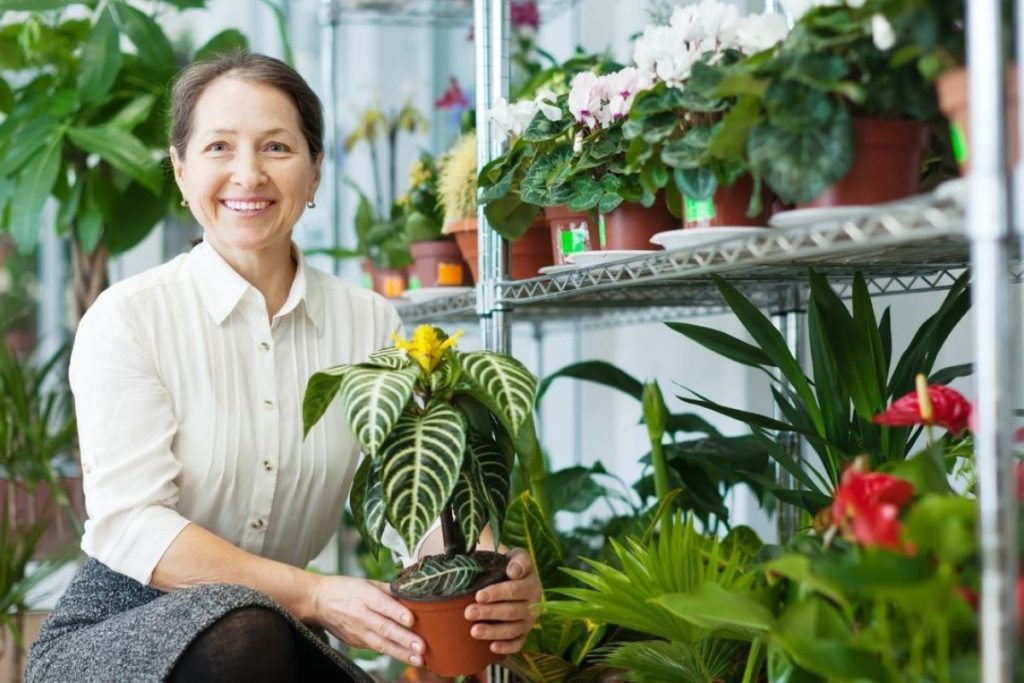
How to zebra plant care for a potted?
In indoor floriculture, the following varieties are popular:
- Aphelandra protruding;
- Aphelandra squarrosa golden;
- Aphelandra four-sided.
As a rule, aphelandra is used for decorative purposes to decorate the winter garden and exhibition spaces. The flower looks attractive both on its own and in a group with other indoor plants. As noted above, aphelandra squarrosa needs a tropical climate, which, alas, is not typical for city apartments. Important conditions for the successful cultivation of a flower are high air temperature, a sufficient amount of moisture, and the complete absence of drafts.
If you are fond of floriculture, you will also be interested in learning how to care for plants:
How to water a zebra plant?

Comfortable watering frequency:
- In summer, the earthen ball must constantly remain wet;
- In late summer, autumn, and winter, the earthen ball should dry out a little between waterings.
Overdrying or soil moist a lot of time leads to rapid wilting, root rot, or death of the leaves.
Direct sunlight or indirect light is better for zebra plants?
Aphelandra squarrosa feels best in direct sun. It can be a window, where is too much light. But in hot summer, the direct sun should be avoided. If it is not possible to put the tropical plant in another place, without hot bright light.
The best solution for this period for the zebra plant is in indirect light, with windows east and west, where the bright light is soft. On the southern windows in the late summer, from 11 to 17, it is necessary to shade. So you will get indirect light. In hot weather, the flower feels good in the fresh air of the natural environment. The main thing is not only the indirect light but also you need to protect the zebra plants from drafts.

Temperature
A comfortable temperature for the zebra plant:
- Daytime – not higher than +27°C;
- Night – not lower than +18°C.
The overwhelming majority of varieties of zebra can withstand temperatures of +13°C throughout the week. The room should be regularly ventilated, but cold drafts and direct light at the same time should be avoided. While the temperature should not fall below +18°C so that the zebra plant does not experience sudden temperature changes. For a protruding aphelandra squarrosa for several months, the temperature should be maintained no higher than +10°C. At this temperature zebra plants thrive.
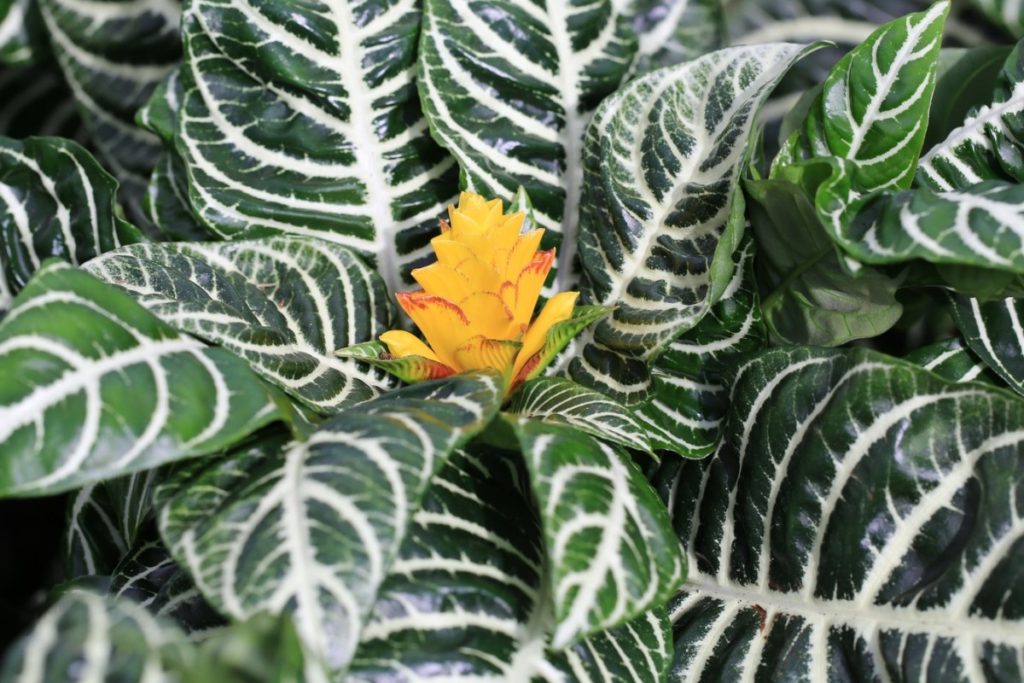
Humidity levels
The humidity of city apartments is not sufficient for growing aphelandra squarrosa, therefore, methods should be used some methods for soil consistently moist throughout the year:
- Spraying. Held only in the summer in sunny weather. Otherwise, high moist soil can lead to the death of colorful flowers.
- Household humidifiers. Used in winter.
- Water containers. Their use is also possible in winter. They provide a long-lasting effect for house plants.
Fertilizer and top dressing
The Zebra plant needs a lot of mineral and organic fertilizers. They should be applied once in several times on the soil line during watering. By observing the zebra plant, you can adjust the amount and composition of the applied top dressing. If the leaves become yellowish and small, this indicates a lack of nitrogen. In the absence of buds, the amount of nitrogen should be reduced.
If the inflorescences are small, lose their brightness, this may indicate an insufficient amount of phosphorus. With a lack of potassium, the leaves may fall off, and yellow or brown spots appear on them.
The soil
The acidity of the soil should vary from 5.5 to 6.5 pH. In the case of the zebra plant, it is the right choice of earthen mixture that largely guarantees the success of the zebra plant growth. It should be loose, fibrous, and soggy soil. If the soil is too acidic, the foliage plant will turn yellow, the inflorescences will become small. With an alkaline soil reaction, the plant stops growing. For the zebra plant, you can choose one of the proposed earth mixture recipes:
- Leaf land – 4 parts, one part of sand and peat;
- Brown peat – 3 parts, one part each of moss, sand, and leafy soil, 10% crushed coal, and a few tablespoons of superphosphate;
- Leafy earth – 4 parts, humus – 2 parts, one part of moss and vermiculite, 10% coal, and a few tablespoons of bone meal;
- Leaf land – 8 parts, sod land – 5 parts, two parts of peat, charcoal, and coniferous earth, one part of vermiculite;
- Sod land – 3 parts, one part of coniferous land, peat, vermiculite, moss, and humus.
Regardless of tropical houseplants of which earth mixture is chosen, it must be sterilized before use.

Zebra plant transplant
Young zebra plants need an annual transplant, then you can transplant once every three years. As a rule, the zebra plant is rejuvenated in this way. The best time to transplant is March or April. In this case, you need to choose a cramped flowerpot, this will contribute to the development of a lush crown and abundant flowering.
Transplant instructions
The plant is watered and carefully pulled out of the moist soil. Roots are washed and inspected to ensure there is no damage. The affected parts of the roots are cut off by sharp blades. Healthy shoots are washed, and the cut places are sprinkled with chopped activated carbon.
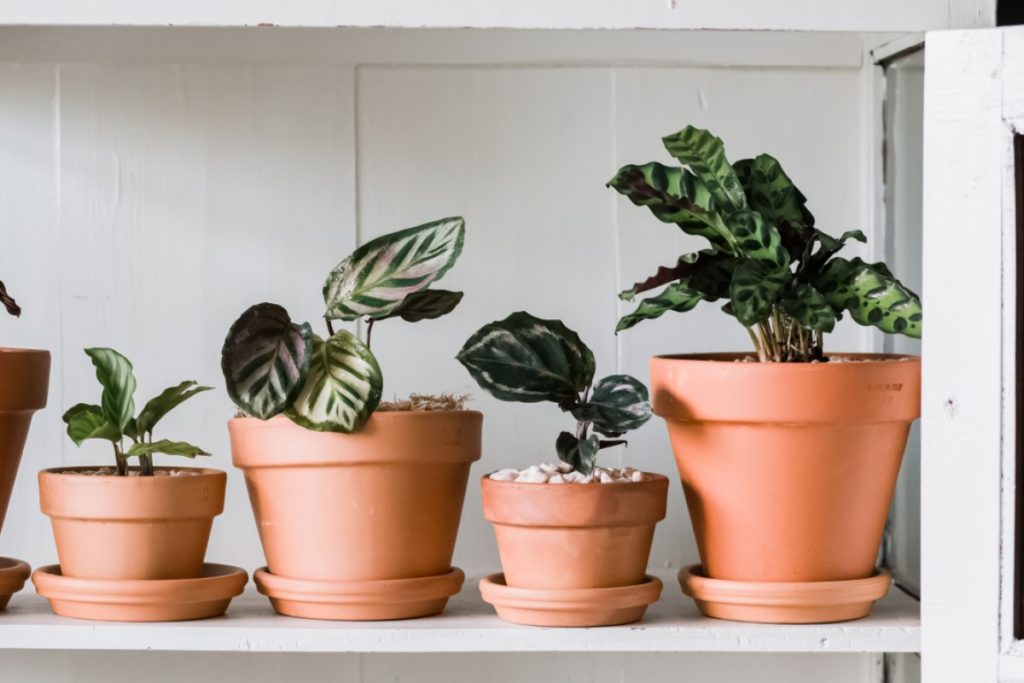
Drainage is poured into the pot with the bottom layer. For this, fragments of tiles expanded clay, stones, or coal. Drainage should take a quarter of the pot. About 4 cm are poured over it soil. The flower is placed on the soil, carefully making sure that the roots do not bend too much. Sprinkle on top an additional layer of earth that can be lightly tamped. Optional but laying out decorative pebbles or leftovers around the stem of the aphelandra is welcome drainage.
How to get a zebra plant to spread out?
Reproduction by seeds
Seeds should be planted immediately after they are collected, that is, in the second half of February or early March. For sowing, a substrate is used, consisting of one part of leafy soil and a quarter of sand. The temperature regime should be maintained within +22 degrees.
To ensure rapid germination of seeds, it is better to organize mini-indoor gardening with bottom heating. With the advent of two sheets, seedlings dive into separate pots. With proper care for a zebra, the houseplant will bloom in the same year.

Reproduction by cuttings
For rooting, cuttings from 10 to 15 cm long are used, on which there are at least two leaves. It is better to cut the cuttings in the spring, in rare cases, the procedure is carried out in the middle of winter. The cut site must be treated with a growth stimulator. This will ensure faster rooting of the cuttings.
For rooting, a substrate is used from a mixture of equal proportions of sand and peat, and the temperature is maintained within + 25°C. In this case, it is necessary to regularly ventilate and spray the shoots. After a month, roots appear and they can be transplanted into separate pots.
How to make a zebra plant bloom?
The flowering period begins in spring and lasts until autumn. At the end of flowering, dry inflorescences must be cut. Aphelandra protruding needs a special treatment after flowering: lowering the temperature to +11°C, direct sunlight, and reduce watering. This stimulates abundant flowering next year.

Diseases of zebra plants
Leaf spotting
Brown weeping spots appear on the leaves. With a deep lesion, the spots can merge, affecting the leaf completely. The disease is either fungal or bacterial. Control measures – breaking off the affected leaves, which are better to burn, and treating the plant with a systemic fungicide. You should also reduce watering for a few weeks and stop spraying the leaves.
Verticillium wilt
Growth stops, and the stems are bent. Pale green spots and yellow dots on the leaves, as a rule, the plant is affected through the ground. There is no cure, such a plant should be disposed of.

The leaves are getting smaller and there are no flowers
It is a lack of mineral fertilizers, so you should increase the number of top dressings, but it is important to control the condition of the flower to adjust the composition of nutrient mixtures if necessary.
The leaves of zebra plant early fall
It is insufficient moisture or the plant is kept in a too warm room. It is enough to transfer the flower to a cool room and the aphelandra will likely come to life and recover. It is believed that aphelandra is quite resistant to various insects, however, in some cases, the appearance of aphids, scale insects, and a mealybug is possible. The plant is treated with a chemical preparation.
Pests affecting zebra plant
Now we will talk about aphids, scale insects, and mealybugs. Aphids are small insects that suck the sap of the plant. Aphids can be dark, green, and even orange. Starts at the tips of young shoots. It should be sprayed with a permethrin-containing preparation. Scale insects are small brown plaques on the underside of the leaf near the white veins.

With a slight lesion, the leaves are wiped with a damp cloth, and with a strong one, they are sprayed weekly with insecticide. Mealybug is a small insect with a whitish coating. Settled in colonies. You should fight the same way as with scale insects.
Frequently asked questions about zebra plant
Why do zebra plants leave dry?
There may be several reasons:
If at the same time as yellowing, the leaves become small, this may indicate a lack of nitrogen in the soil;
Why are my zebra plant’s leaves turning brown? It may be due to insufficient potassium;
The leaves of the zebra plant may wither if the plant is in a draft;
Too bright light also causes the leaves to dry out;
Another reason for the drying of the crown is the lack of fresh air.
Why doesn’t the aphelandra bloom?
If we are talking about protruding aphelandra, the lack of buds is due to non-compliance with the growing regime. This variety needs a dormant period after flowering when the air temperature drops and water decreases. In other cases, the reason for the lack of flowers is the lack of nutrients in the soil.
Aphelandra can be placed at exhibitions, for temporary or permanent decoration of spacious rooms and winter gardens, and also kept in apartments. It well complements small arrangements and flower girls with moisture-loving exotic plants.
Where could I buy this flower?
You can buy an original plant in specialized stores, and greenhouses. The cost of plants depends on the type and size of the flower. Most stores cannot boast of a variety of Aphelandra species and offer the most popular Scuarros variety.
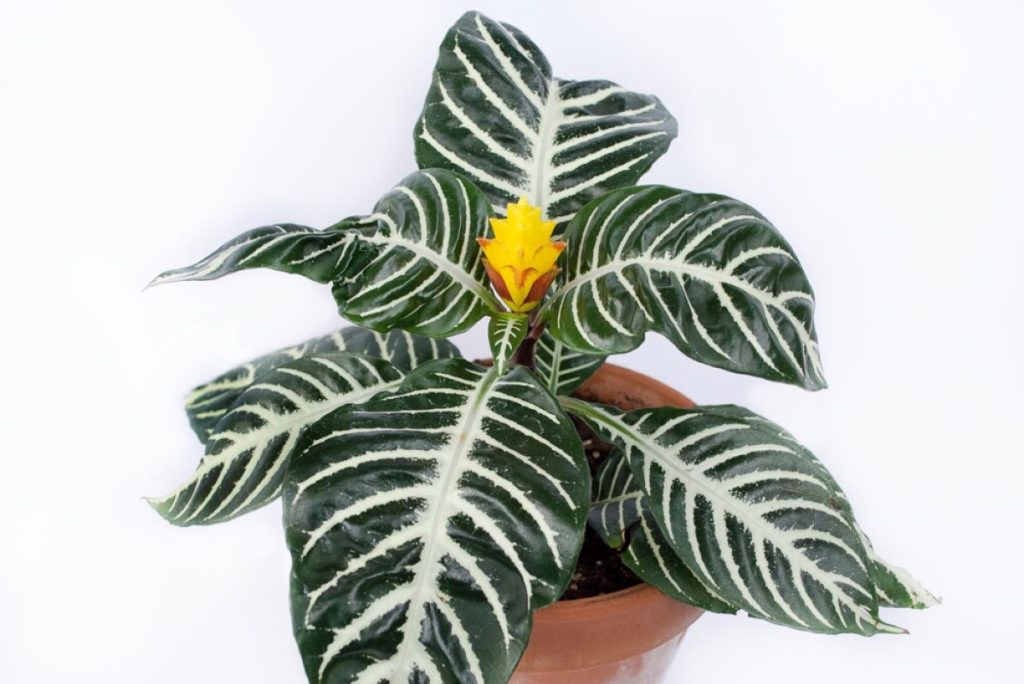
Conclusion
This is not to say that caring for aphelandra at home is simple. After all, it is quite difficult to create conditions close to a tropical climate, and it is not always possible. Only abundant, but not excessive watering, high temperature and humidity, sufficient light and regular fertilization will ensure the normal growth and development of an exotic flower. But if you follow all the recommendations, the aphelandra will become a luxurious decoration for any interior and will allow you to admire its beauty for a long time.
How much sun does a zebra plant need?
A Zebra Plant needs bright, indirect light. It can tolerate some direct sunlight, but too much can cause the leaves to turn yellow or brown. It’s best to place the plant in a location where it will receive bright, filtered light throughout the day.
How often should you water a zebra plant?
It is recommended to water a zebra plant once a week, allowing the soil to dry out slightly between watering.
How often should you water a zebra plant?
It is recommended to water a zebra plant once the top inch of soil is dry.
Why are my zebra plant leaves falling off
There could be several reasons why your zebra plant leaves are falling off, including:
Overwatering or underwatering
Pests or disease
Low humidity or dry air
Lack of proper nutrients
Too much direct sunlight
Temperature changes.
We would recommend inspecting the plant for any visible signs of pests or disease, checking the soil moisture and light levels, and making sure the plant is getting the proper nutrients. If the problem persists after making adjustments, it may be helpful to consult a local nursery or plant expert for further advice.

